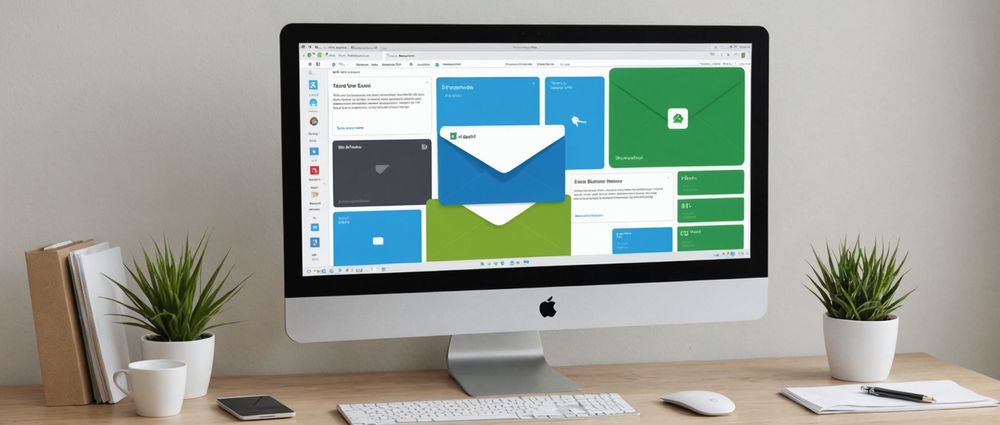Email can be a double-edged sword. While it’s an essential tool for communication, it can also become overwhelming and time-consuming. This article will explore effective email management tips to help you reclaim your time and increase your productivity. Read on to discover strategies to organize, prioritize, and streamline your email workflow.
Organize Your Inbox

One of the first steps to effective email management is organizing your inbox. An organized inbox makes it easier to find important messages and reduce clutter. Start by creating folders or labels to categorize different types of emails such as work, personal, and newsletters. Using rules or filters can automatically sort incoming emails into the correct folders, saving you time.
Another technique to consider is using the “Inbox Zero” methodology. This involves keeping your inbox empty or nearly empty by immediately responding to, deleting, or archiving new emails. This way, you can quickly deal with new messages without leaving them to pile up.
Setting Up Filters and Rules
Creating filters and rules for your emails can significantly reduce the time you spend sorting through your inbox. Most email clients, like Gmail and Outlook, offer robust filter options. You can set rules to automatically move certain emails into specific folders, tag them with labels, or mark them as read.
- Identify common email types (e.g., newsletters, work emails, personal correspondence).
- Create folders or labels for each category.
- Set up filters to automatically sort incoming emails.
- Regularly review and adjust your filters as needed.
Prioritize Your Emails

Not all emails are created equal. To manage your time effectively, it’s crucial to prioritize your emails based on their importance and urgency. One approach is the Eisenhower Matrix, which categorizes tasks (or emails) into four quadrants based on urgency and importance:
- Important and urgent
- Important but not urgent
- Not important but urgent
- Not important and not urgent
By categorizing your emails in this manner, you can focus on what truly matters and defer or delegate less critical messages. This will help ensure that urgent and important emails take precedence, while non-essential emails do not consume your valuable time.
Schedule Specific Times for Email

One of the biggest productivity killers is constantly checking and responding to emails throughout the day. To avoid this, schedule specific times for email management. For example, you can check your emails at the start of the day, after lunch, and before the end of the workday. This allows you to focus on other tasks without the constant interruption of new emails.
During these scheduled times, dedicate yourself entirely to clearing your inbox. Respond to urgent emails first, archive or delete non-essential messages, and save important but not urgent emails for later. By doing this, you can maintain a balanced workflow and keep email distractions at bay.
Unsubscribe and Declutter
Another effective way to manage your email is by decluttering your inbox. Unnecessary subscriptions can clog up your email and distract you from more important messages. Periodically review the newsletters and promotional emails you receive and unsubscribe from those you no longer find valuable.
There are also tools and services that can help with this process. For instance, Unroll.Me allows you to easily unsubscribe from multiple mailing lists at once. By reducing the number of incoming emails, you’ll have fewer messages to sort through and can focus on the ones that matter.
Use Email Templates
For repetitive emails, consider creating templates. This can save you a significant amount of time, especially if you often send similar types of emails. Most email clients provide a feature to save templates. By using templates, you can quickly respond to common queries or repetitive tasks without starting from scratch each time.
Additionally, you can customize the templates for different scenarios, such as client onboarding, project updates, or follow-up messages. This ensures you’re providing consistent and professional responses while streamlining your email tasks.
Conclusion
Managing your email effectively can be a game-changer for your productivity. By organizing your inbox, prioritizing your emails, scheduling specific times for email management, unsubscribing from unnecessary lists, and using templates, you can reclaim your time and focus on more critical tasks. Implement these strategies to experience a more streamlined and less overwhelming email workflow.
FAQ
How can I organize my email inbox effectively?
To organize your email inbox effectively, create folders or labels for different email categories and set up filters to automatically sort incoming emails. Use the “Inbox Zero” methodology to keep your inbox as empty as possible by promptly dealing with new messages.
What is the best way to prioritize my emails?
The Eisenhower Matrix is a useful tool for prioritizing emails based on urgency and importance. Categorize your emails into four quadrants: important and urgent, important but not urgent, not important but urgent, and not important and not urgent.
How often should I check my emails during the day?
It’s best to check your emails at specific times, such as at the start of the day, after lunch, and before the end of the workday. This approach helps you avoid constant interruptions and allows you to focus on other tasks.
Why should I unsubscribe from newsletters and promotional emails?
Unsubscribing from unnecessary newsletters and promotional emails helps declutter your inbox, reducing the number of incoming emails you need to sort through. This makes it easier to focus on important messages and manage your email more efficiently.
How can email templates save time?
Email templates save time by allowing you to quickly respond to repetitive queries or tasks without starting from scratch. Templates ensure consistent, professional responses and streamline the email communication process.


